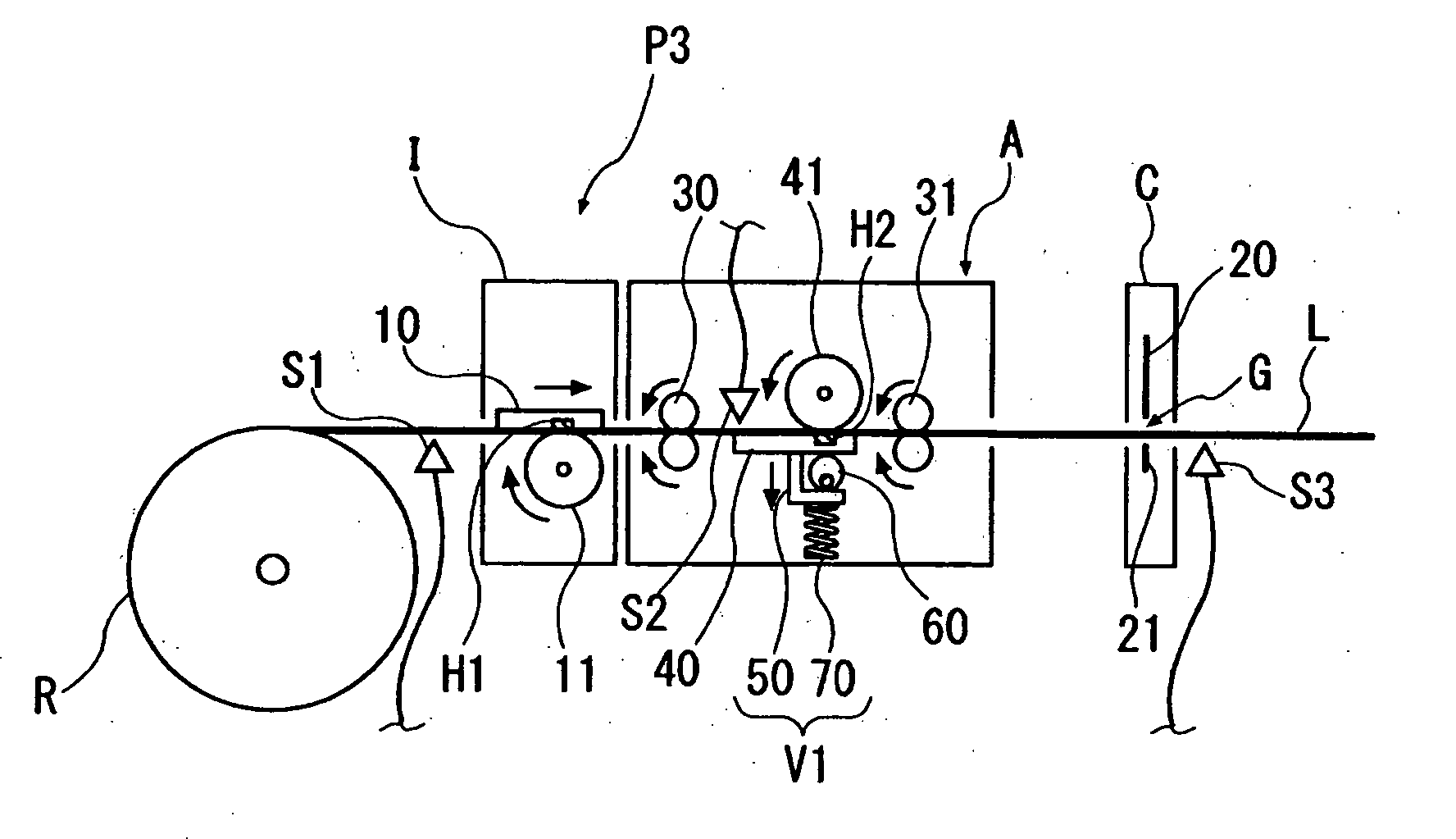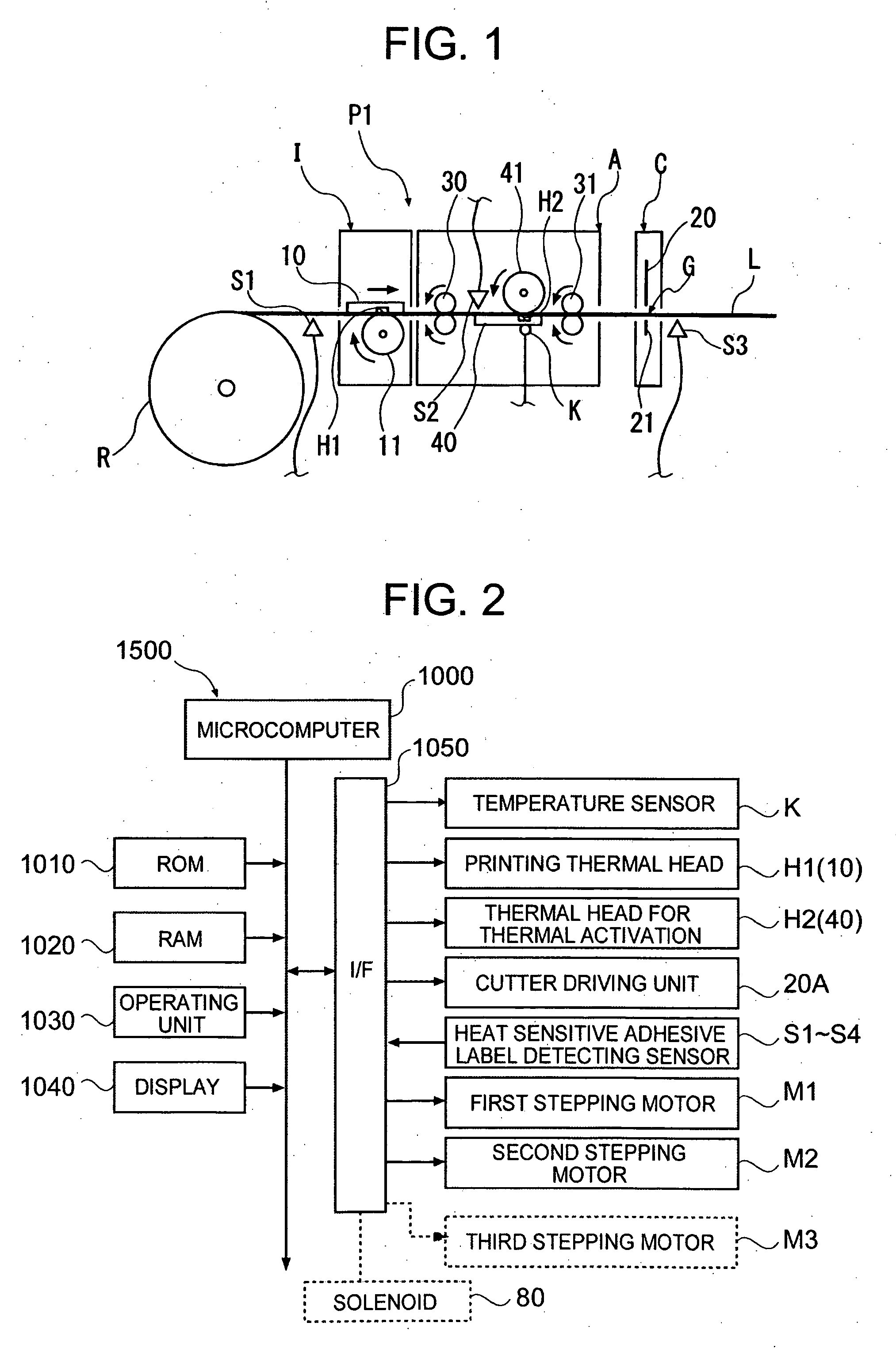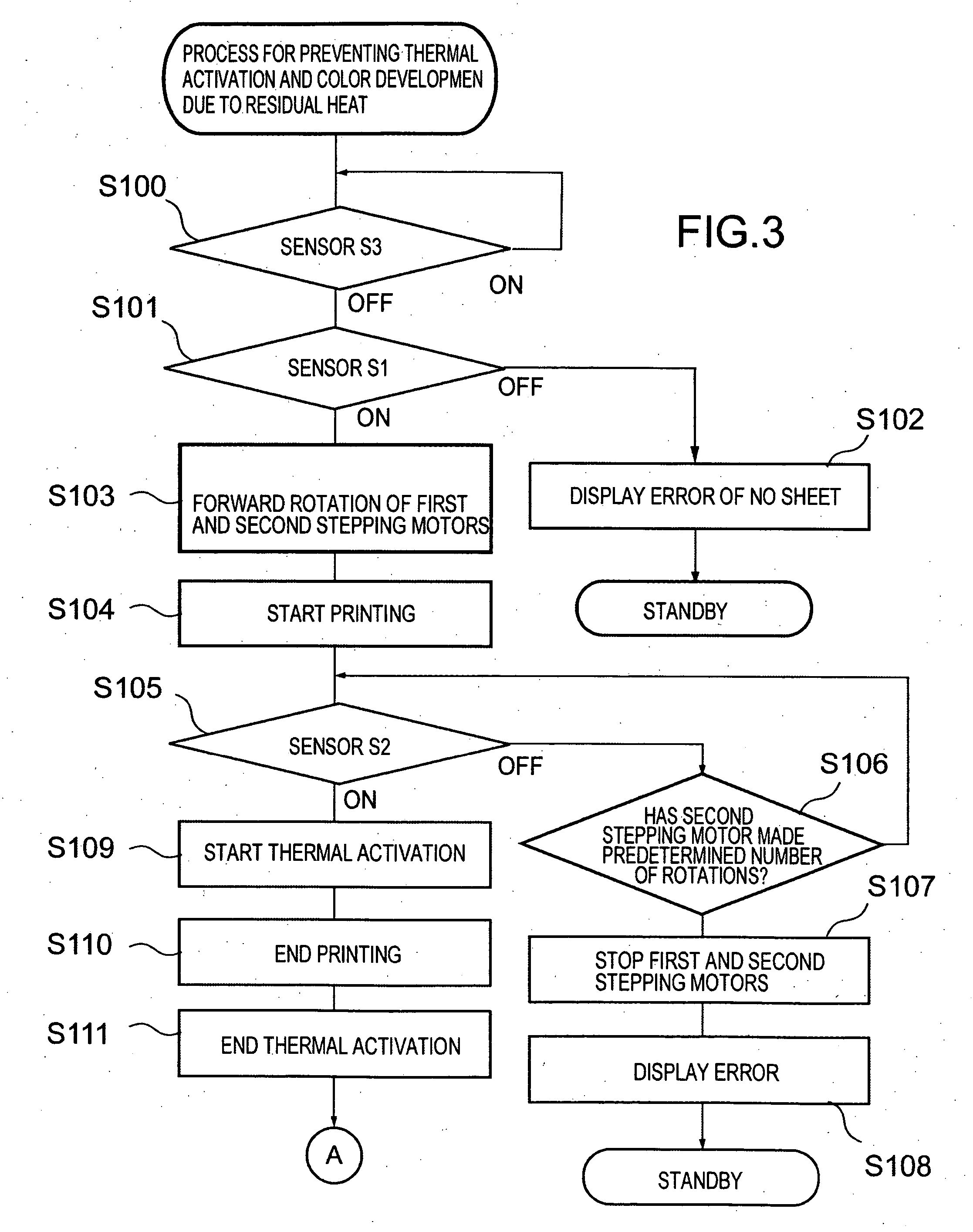Printer apparatus
a printing machine and printing technology, applied in the field of printing machines, can solve the problems of lowering cutting quality, high manufacturing cost, and paper jamming, and achieve the effects of low cost structure, simple structure and reliable avoidan
- Summary
- Abstract
- Description
- Claims
- Application Information
AI Technical Summary
Benefits of technology
Problems solved by technology
Method used
Image
Examples
first embodiment
[0040]FIG. 1 is a schematic diagram that shows a configuration of a thermal printer apparatus P1 according to the present invention. FIG. 2 is a control block diagram for the thermal printer P1.
[0041] Referring to FIG. 1, the thermal printer apparatus P1 includes a printer unit I, a thermal activation unit A as a thermal activation device, and a cutter unit C that are disposed in order in a transporting direction (a direction toward the right in FIG. 1) of a heat-sensitive adhesive label L. It should be noted that a heat-sensitive adhesive sheet roll R, around which a continuous sheet of the heat-sensitive adhesive labels L are wound, is disposed in the vicinity of the printer unit I.
[0042] The printer unit I includes a thermal print head 10, a platen roller 11 that is pressed onto the thermal print head 10, and a drive system, which is not shown, that rotates the platen roller 11 (a first stepping motor M1 and a gear train, for example). By rotating the platen roller 11 in a clock...
second embodiment
[0079] Referring to FIGS. 7A to 7D, a thermal printer apparatus P2 according to the present invention is explained next.
[0080] The structure of the thermal printer apparatus P2 is substantially similar to that of the thermal printer apparatus P1 according to the first embodiment, described above. The thermal printer apparatuses differ as follows. The temperature sensor K does not exist in the thermal printer apparatus P2, and the distance from the heater element H2 of the thermal-activation thermal head 40 to the blades 20 and 21 of the cutter unit C has been increased in the thermal printer apparatus P2.
[0081] Referring to FIG. 7A, a distance Y from the heater element H2 of the thermal-activation thermal head 40 to the blades 20 and 21 of the cutter unit C is set so that the thermal-activation thermal head 40 reaches a temperature equal to or less than a predetermined temperature (70° C., for example) when the cutting position G of the heat-sensitive adhesive label L reaches the p...
third embodiment
[0085] Referring to FIGS. 8, 9A and 9B, and 10A and 10B, a thermal printer apparatus P3 according to the present invention is explained next.
[0086] The thermal printer apparatus P3 according to the third embodiment is configured by omitting the temperature sensor K from the thermal printer apparatus P1 of the first embodiment, and by providing a thermal head separator mechanism V1 that withdraws the thermal-activation thermal head 40 from the thermal activation platen roller 41. The first stepping motor M1 and the second stepping motor M2 are stopped when the cutting position G of the heat-sensitive adhesive label L reaches the position of the blades 20 and 21 of the cutter unit C, and the thermal head separator mechanism V1 is operated. The heat-sensitive adhesive layer of the heat-sensitive adhesive label L located at the thermal-activation thermal head 40 is thus separated from the surface of the thermal-activation thermal head 40 when the cutter unit C performs cutting processin...
PUM
 Login to View More
Login to View More Abstract
Description
Claims
Application Information
 Login to View More
Login to View More - R&D
- Intellectual Property
- Life Sciences
- Materials
- Tech Scout
- Unparalleled Data Quality
- Higher Quality Content
- 60% Fewer Hallucinations
Browse by: Latest US Patents, China's latest patents, Technical Efficacy Thesaurus, Application Domain, Technology Topic, Popular Technical Reports.
© 2025 PatSnap. All rights reserved.Legal|Privacy policy|Modern Slavery Act Transparency Statement|Sitemap|About US| Contact US: help@patsnap.com



